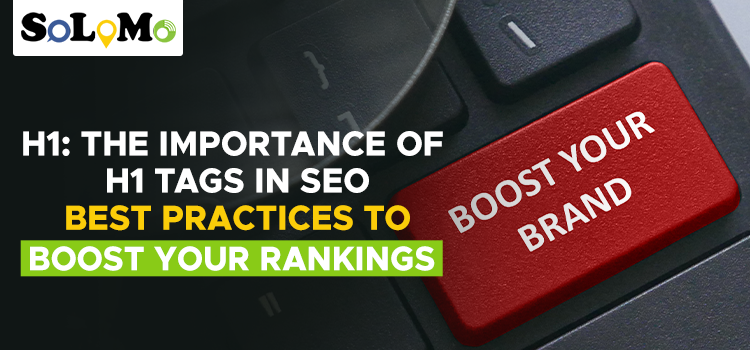Every Small details matter in SEO, especially when you’re trying to stand out in a competitive digital world. One of those small but important elements is the H1 tag. Though it seems basic, an optimized H1 tag can improve your visibility on Google, enhance user experience, and provide a clear structure for both search engines and readers.
Understanding how to use the H1 tag properly can make a big difference in your SEO results. Here’s a breakdown of what the H1 tag is, why it’s important, and how you can use it to boost your website’s rankings and engage your visitors.
What Is an H1 Tag?
An H1 tag is an HTML element used to mark the primary heading on a webpage. Think of it as the title of a book. It should clearly describe the content of the page, helping both search engines and visitors understand what the page is about.
Typically, the H1 tag is placed at the top of the page, right before the body text. Here’s what it looks like in HTML:
html
Copy Edit
<h1>This is an H1 heading</h1>
Every webpage should have only one H1 tag to maintain clarity and proper content hierarchy. This structure helps both users and search engines understand your page better.
Why H1 Tags Are Important for SEO
The H1 tag is important for both technical and content-related reasons:
1. Helps Search Engines Understand the Page Content
Search engines use the H1 tag to get a quick idea of what the page is about. If your H1 tag includes relevant keywords, it signals to search engines what your content is about, improving your chances of ranking for those terms.
2. Improves User Experience
When users land on your page, they typically skim through content. The H1 tag acts as an anchor, quickly letting visitors know what the page is about. If the heading is clear and relevant, users are more likely to stay, reducing bounce rates and boosting engagement.
3. Organizes Your Content
H1 tags help create a clear structure for your page. A well-organized page is easier to navigate, both for users and search engines. After the H1 tag, you can use subheadings (H2, H3, etc.) to break down the content further. This hierarchy makes your content more readable and SEO-friendly.
4. Keyword Optimization without Overstuffing
Including your main keyword in the H1 tag helps search engines understand the topic of the page. But be careful not to overstuff the H1 with keywords. It should sound natural and be directly relevant to the content.
Best Practices for Using H1 Tags
Here are some best practices to help you optimize your H1 tags:
Use Only One H1 Tag per Page
Stick to a single H1 tag per page to maintain a clear structure, making it easier for both search engines and users to understand the main content.
Make Your Headings Clear and Descriptive
Ensure your H1 tag directly reflects the page’s content. Clear, descriptive headings keep users engaged and reduce bounce rates.
Include Your Target Keyword
Incorporate your target keyword into the H1 tag, ideally near the start, but avoid keyword stuffing to ensure the heading remains natural and relevant.
Keep It Short and Sweet
Keep your H1 tag between 60-70 characters for readability. Short headings are more user-friendly, especially on mobile devices.
Align H1 with the Title Tag
The H1 and title tag should reflect the same content but can use variations. This avoids redundancy and ensures both tags match the user’s intent.
Common Mistakes to Avoid
Here are some common mistakes that can negatively impact your SEO:
- Using Multiple H1 Tags: Stick to just one H1 tag per page. Using more than one can confuse both users and search engines.
- Keyword Stuffing: Don’t force keywords into your H1 tag. It should read naturally and focus on the user’s intent.
- Using Irrelevant or Generic Headings: Make sure your H1 tag is directly related to the page content. A generic heading can turn visitors away.
- Overusing H1 for Design: The H1 tag is meant to define the topic of the page, not just for styling purposes.
Final Thoughts
The H1 tag is one of the most important elements in SEO. It helps both search engines and users understand what your webpage is about, and it plays a key role in boosting your rankings. By following best practices for crafting and optimizing your H1 tags, you can improve your SEO, enhance user experience, and increase engagement on your website.
A well-optimized H1 tag may seem like a small detail, but it has a big impact on how your page is viewed by both search engines and visitors. So take the time to get it right—it’s worth the effort.

